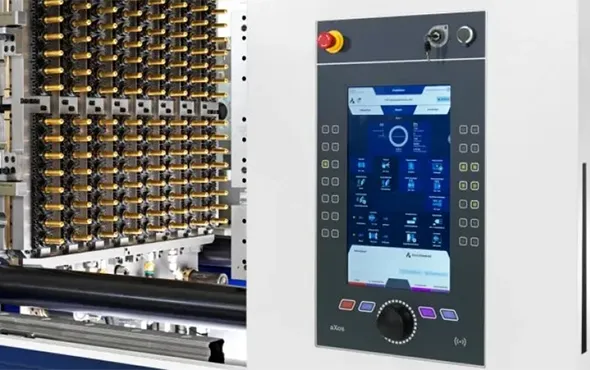Hybrid HMIs are bringing balance back to our digital world. After all, a large display or a pure touchscreen is not always the right choice for the end user. Hybrid HMI concepts put the focus back on the user and ensure safe and intuitive operability. Less either-or and more both-and.
The requirements for modern input systems are as diverse as the devices themselves – especially in sectors such as medical technology, mechanical engineering, mobility and the food industry. While touchscreens offer flexible interfaces, classic buttons provide clear feedback. But in many applications, one of these solutions alone is no longer sufficient. The answer: hybrid HMIs that cleverly combine buttons and touch.
In this article, you will find out when it is worth combining different operating modes, how hybrid systems work – and what you should bear in mind when designing them.
Why either-or is no longer enough
Traditional operating concepts reach their limits in many applications. Touch systems are ideal for dynamic content and flexible user guidance, but reach their limits with security-relevant actions or in harsh environments. Conversely, membrane keypads offer clear, haptic feedback – but are less flexible.
Typical situations in practice:
- A doctor wants to set parameters via a touch menu, but wants to start a device safely using a button.
- A machine operator wears gloves – the touch function only responds to a limited extent.
- A control panel in the vehicle must be able to be used efficiently both while driving (buttons) and when stationary (touch).
The solution: hybrid operating concepts in which both technologies are sensibly coordinated.

What are hybrid HMI systems?
Hybrid HMIs combine mechanical or capacitive buttons with touch surfaces on a common control panel. Different operating zones can be designed – for example:
- Left static buttons with fixed function
- a touch display with changing menus on the right
- a touch display in the center and static buttons all around
- or buttons that function on a touch basis themselves (“touch buttons” with a defined button, but without moving parts).
The aim is always: maximum operating logic, safety and user-friendliness – even under difficult conditions.
Advantages of hybrid operating concepts
✅ Safety through tactile feedback:
Classic buttons remain the first choice for emergency stop functions, start/stop or critical inputs.
✅ Flexibility through touch:
Menus, number fields or complex inputs can be implemented more easily and more space-savingly with touch.
✅ S pace saving and design freedom:
Hybrid HMIs enable flat designs, continuous glass or foil fronts – ideal for modern devices.
Multifunctionality:
Buttons can be linked to the touch content depending on the context (e.g. via LED display, display connection or touch buttons with feedback).
Where are hybrid HMIs used?
Medical technology:
Safe, disinfectable devices with clear separation of standard functions (buttons) and extended menu navigation (touch)
Mechanical engineering:
Robust control panels where start/stop or emergency stop cannot be “accidentally” activated on the touchscreen
Mobility:
Driver operation in the vehicle or on mobile machines – tactile feedback when moving, touch when stationary
Food industry:
Smooth, easy-to-clean surfaces with touch buttons; separate buttons for main functions that can also be operated with gloves

Practical experience shows that end users demand simple and intuitive usability. Long searches in complex menus on a pure touch display are counterproductive. Hybrid HMIs with haptic buttons in combination with a large display offer clear advantages when driving a car, treating a patient or in a complex production process.
What you should pay attention to when planning
In order for a hybrid system to really make the most of its advantages, the following points should be considered at an early stage:
- Clear operating structure: Which functions require tactile feedback? What can go on the Touch?
- Mechanical and electrical design: integration of button modules, capacitive surfaces, controller connection, etc.
- Hygiene requirements and standards: Flush construction, tightness, cleaning – especially in sensitive sectors
- Usability tests in the field: only real users can show whether the concept works
Conclusion: hybrid instead of compromise
The combination of buttons and touch is not a compromise – it is often the optimal solution for complex applications. It offers security, flexibility and modern design in one system. However, this requires early and well thought-out planning – tailored to the actual usage situation.
Would you like to modernize your operating concept or are you planning a new device?
Let us check together how a hybrid HMI can be implemented for your application.

